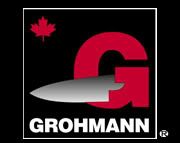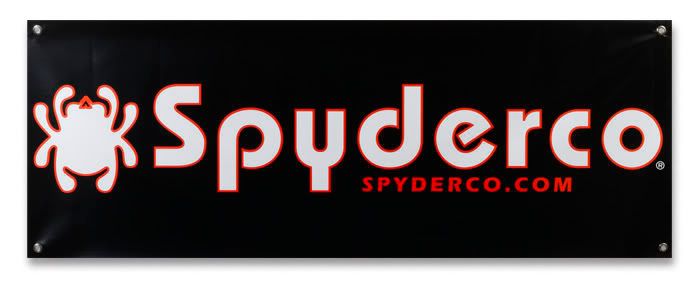I've also just started experimenting with a 16½" blued bull .41 Remington Magnum barrel by Bullberry. The first loads fired were the Winchester 175 gr. Silvertips. I understand that these are not loaded to top velocities and I believe it. This was a very mild recoiling load. Playing around, a human-head sized rock was VERY easy to hit at 50 yards.
However, I have a Simmons Wild Turkey Federation 4x scope mounted on this carbine and I experienced some of the same problems with the scope adjustment as I did in the .25-35 setup mentioned below. Also, this is using the Millet rings which are adjustable for windage (both the front and back) and I played the devil of a time to get them centered. That did work well however, as my boresighting with the rings had all groups centered. The only problems were with elevation. To correct those problems, I am already experimenting with the Hornady 210 gr. XTP. Loaded on top of 22.5 gr. of Hogdon's L'il Gun, I feel that this will be a real performer as velocities should go 1800+ fps in my long barrel.
Of course I've got lots to do with my .22 Hornet, .218 Bee and .223 Remington barrels. Until I run out of them, I'll be loading the Hornady 35 gr. .224 VMAX over 13 gr. L'il Gun in the Hornet, 14 gr. L'il Gun in the Bee and loading the Sierra 63 gr. SP in the .223 Remington. My son-in-law says thet his dad has lots of groundhogs that "need" killing! Better get to work!
They also have lots of coyotes. For that reason I'll be going up in bullet weight when I run out of the 35 gr. VMAXs. I understand that there is still a bounty in some counties.
Thursday, March 27, 2003
I've been busy with other things, like shooting!
One of the products I've been working on is the Thompson Center Contender Custom Shop .25-35 21" barrel (standard taper profile) with Weaver mount and Swift 1.5-4.5x scope.
I acquired from some person who will remain un-named, approximately 250 cases of which 55 cases were reformed .30-30. All were supposed to be "once fired". They were not. Also, it seemed that they had been fired in an assortment of chambers. The end result is that even after the standard case preparation (polish, lube, resize/deprime, trim, chamfer, clean primer pockets) there was still some difference in case neck tension. This seems to differ based on manufacture and date of manufacture (based on headstamps).
Still, even with mixed brass, groups were acceptable if not at all impressive, running in the 1½-3½ inch range with like brass grouping in tight 1-1½ "sub-groups". Unfortunately, differing bullet weights do not shoot to anything like the same POI, differing by as much as 10"! Also unfortunate, my scope does not have the range of adjustment required to make it usable with the desired range of bullets.
What range of bullets am I talking about? Well, first I had zeroed with the Winchester factory load which features the 117 grain "RN" bullet (actually a flat point). This load moves out at about 2200 fps from my barrel. I was pretty pleased with this load. It was accurate, I was able to zero quickly and the recoil and muzzle blast was pretty mild, even with the 21" barrel and 6 pound weight of my carbine with Rynite stock. I then tried the Sellier and Bellot (S&B) 6.5x52mmR load which features a FP jacketed bullet of the same 117 grain weight and a velocity of 2008 fps. That it is a mild load goes without saying. I'm sure it would be effective on smallish deer in found in some parts of the country, but on our local whitetails I'd want to get closer AND I wouldn't feel comfortable in stretching the range given the trajectories of these "slow" loads.
So, I decided I create an effective coyote load (which has proven impractical) of the 75 gr. Hornady VMAX, 34 gr. of Hogdon's BL(C)2, CCI200 and a factory .25-35 case. Velocities are supposed to be high and they are. Averaging 2837 fps, I sure the spread (from 2937 to 2766 fps) being due to the aforementioned varying case neck tension. Still it grouped fairly well and "sub-groups" of 1-1½" gave hints of great promise for this load. Unfortunately... yes, there is a "but"... groups were a full 10" higher on the target than the Winchester factory POA... at 50 yards. This was unacceptable and the scope's range of adjustment was insufficient to adjust the bullet strike to the proper place on the target.
So, the base was shimmed and scope remounted. That did not make enough difference, bringing the group only 3" lower. Doubling the shim thickness (to the limit of my personal comfort zone with this modification) predictably only lowered the group another 3", still a good 4" above the POA. Also, factory loads would have required equally radical sight adjustment. I decided I just did not want to mess with this further.
Now, I will be trying the Hornady 117 gr. RN and the Remington 86 gr. FP (for the .25-20). I'll push the former at max velocities (for this case) in new factory brass and load the latter bullet to approximate the .25-20 velocities it was built for. Approximate because I will adjust the velocities so that the sights will not have to be changed in order to use both loads. If this works out I'll be very happy with this light and light recoiling rifle. Additionally, it will clearly do what it was intended to do, provide me with hours of enjoyable shooting in experimentation.
As a side note, I have noticed that better velocities can be achieved with the .257 TCU cartridge. Provided the throat is properly matched to the barrel this would make it better for those wanting to achieve top velocities in the Contender with the .25 caliber bullets. Another alternative is a custom barrel for one of the improved forms of the .25-35 such as Francis Sell's Tomcat, the .25 Bullberry or slightly different .25 Bullberry Improved.
One of the products I've been working on is the Thompson Center Contender Custom Shop .25-35 21" barrel (standard taper profile) with Weaver mount and Swift 1.5-4.5x scope.
I acquired from some person who will remain un-named, approximately 250 cases of which 55 cases were reformed .30-30. All were supposed to be "once fired". They were not. Also, it seemed that they had been fired in an assortment of chambers. The end result is that even after the standard case preparation (polish, lube, resize/deprime, trim, chamfer, clean primer pockets) there was still some difference in case neck tension. This seems to differ based on manufacture and date of manufacture (based on headstamps).
Still, even with mixed brass, groups were acceptable if not at all impressive, running in the 1½-3½ inch range with like brass grouping in tight 1-1½ "sub-groups". Unfortunately, differing bullet weights do not shoot to anything like the same POI, differing by as much as 10"! Also unfortunate, my scope does not have the range of adjustment required to make it usable with the desired range of bullets.
What range of bullets am I talking about? Well, first I had zeroed with the Winchester factory load which features the 117 grain "RN" bullet (actually a flat point). This load moves out at about 2200 fps from my barrel. I was pretty pleased with this load. It was accurate, I was able to zero quickly and the recoil and muzzle blast was pretty mild, even with the 21" barrel and 6 pound weight of my carbine with Rynite stock. I then tried the Sellier and Bellot (S&B) 6.5x52mmR load which features a FP jacketed bullet of the same 117 grain weight and a velocity of 2008 fps. That it is a mild load goes without saying. I'm sure it would be effective on smallish deer in found in some parts of the country, but on our local whitetails I'd want to get closer AND I wouldn't feel comfortable in stretching the range given the trajectories of these "slow" loads.
So, I decided I create an effective coyote load (which has proven impractical) of the 75 gr. Hornady VMAX, 34 gr. of Hogdon's BL(C)2, CCI200 and a factory .25-35 case. Velocities are supposed to be high and they are. Averaging 2837 fps, I sure the spread (from 2937 to 2766 fps) being due to the aforementioned varying case neck tension. Still it grouped fairly well and "sub-groups" of 1-1½" gave hints of great promise for this load. Unfortunately... yes, there is a "but"... groups were a full 10" higher on the target than the Winchester factory POA... at 50 yards. This was unacceptable and the scope's range of adjustment was insufficient to adjust the bullet strike to the proper place on the target.
So, the base was shimmed and scope remounted. That did not make enough difference, bringing the group only 3" lower. Doubling the shim thickness (to the limit of my personal comfort zone with this modification) predictably only lowered the group another 3", still a good 4" above the POA. Also, factory loads would have required equally radical sight adjustment. I decided I just did not want to mess with this further.
Now, I will be trying the Hornady 117 gr. RN and the Remington 86 gr. FP (for the .25-20). I'll push the former at max velocities (for this case) in new factory brass and load the latter bullet to approximate the .25-20 velocities it was built for. Approximate because I will adjust the velocities so that the sights will not have to be changed in order to use both loads. If this works out I'll be very happy with this light and light recoiling rifle. Additionally, it will clearly do what it was intended to do, provide me with hours of enjoyable shooting in experimentation.
As a side note, I have noticed that better velocities can be achieved with the .257 TCU cartridge. Provided the throat is properly matched to the barrel this would make it better for those wanting to achieve top velocities in the Contender with the .25 caliber bullets. Another alternative is a custom barrel for one of the improved forms of the .25-35 such as Francis Sell's Tomcat, the .25 Bullberry or slightly different .25 Bullberry Improved.
Wednesday, March 12, 2003
There was a discussion about the safety of using the oven to dry cartridge cases that had been washed in water. The consensus is that the brass does not reach a temperature hot enough to change it's properties when the oven is set at 200 degrees Fahrenheit.
My experience is that I shoot some BP .38-55 ammo and washing BP is recommended. But after my first experience with new brass and the oven technique, I'll never dry in an oven again. Fully one half of the cases split, down the body, on the second firing. (.38-55 Winchester, Winchester brass). Now I wash in hot soapy water, rinse in hot water, towel off and leave to dry. If there is stubborn water on the cases, I might use a hair dryer to blow dry the particular case, if it doesn't burn my hand, the brass will be fine. Maybe this is one of the few instances of some sort of OC behavior on my part but, well, this is what I do and why.
I'd like to hear more about it.
My experience is that I shoot some BP .38-55 ammo and washing BP is recommended. But after my first experience with new brass and the oven technique, I'll never dry in an oven again. Fully one half of the cases split, down the body, on the second firing. (.38-55 Winchester, Winchester brass). Now I wash in hot soapy water, rinse in hot water, towel off and leave to dry. If there is stubborn water on the cases, I might use a hair dryer to blow dry the particular case, if it doesn't burn my hand, the brass will be fine. Maybe this is one of the few instances of some sort of OC behavior on my part but, well, this is what I do and why.
I'd like to hear more about it.
I am searching for an ammo box appropriate to the .22 Hornet and .218 Bee. Most boxes allow for too much length and the ammo rattles around in the box. If anyone has a product recommendation, please pass it on.
I got the new to me .25-35 barrel out and zeroed it, pretty much. The wind was blowing so hard that I had to hurry to shoot before my target would get blown off the backer!
Went by the shops today and saw one of the new Para Ordance .45s (the Companion?) with the double action trigger AND grip safety. WOW! I don't know how it shoots but that is the lightest double action trigger I've ever seen. Smooth, breaks like glass and light. A single stack pistol, I think it would carry better than my Combat Commander OR my Makarov.
I got the new to me .25-35 barrel out and zeroed it, pretty much. The wind was blowing so hard that I had to hurry to shoot before my target would get blown off the backer!
Went by the shops today and saw one of the new Para Ordance .45s (the Companion?) with the double action trigger AND grip safety. WOW! I don't know how it shoots but that is the lightest double action trigger I've ever seen. Smooth, breaks like glass and light. A single stack pistol, I think it would carry better than my Combat Commander OR my Makarov.
Tuesday, March 04, 2003
Today I completed loading the 100 Graf & Sons/Hornady 7.65x53mm cases. I picked up 2 boxes of the .41 Hornady 210 gr. XTPs (and was a bit surprised at the round ogive, I expected more of a truncated cone form). I started forming some more 7mm TCU brass from milsurp (LC 97). This last I plan on loading with H335 to compare to the H4895 loads I've been using.
I need to get some more Midway sliptop 20 round boxes. They seem to be the best size for everything bigger than .223 case head cases.
I also learned today that the Hornady 7mm SSP bullet is now the same as the 120 gr. 7mm VMAX. That was a surprise. I am wondering if they did the .30 SSP the same way and the .30 130 gr. VMAX is the new SSP. I've been thinking of going to that anyway.
I need to get some more Midway sliptop 20 round boxes. They seem to be the best size for everything bigger than .223 case head cases.
I also learned today that the Hornady 7mm SSP bullet is now the same as the 120 gr. 7mm VMAX. That was a surprise. I am wondering if they did the .30 SSP the same way and the .30 130 gr. VMAX is the new SSP. I've been thinking of going to that anyway.
Monday, March 03, 2003
Again, my shooting activities have been limited due to weather and work.
I've been doing some reloading and cleaning up the odd, unloaded cases. One thing I've done is taken a leap with the 7.65x53mm Argentine. Having received 100 of the Graf & Sons/Hornady brass, I felt these needed reloading as well. I just don't feel comfortable plinking with the Woodleigh 215 grain RNs at $28+ for 50 (from MidwayUSA)! So, I developed a load, safe in my 1891 carbine, of 46 gr. H4350 with the Sierra .312" 180 gr. SP. I don't think that, despite Norma loading a very similar load, that the sights of military weapons in this chambering were ever calibrated for loads with 180 grain bullets. However, this load is VERY similar to the 174 gr. British MK VII loading. In fact, I use this same bullet in my .303 military ball duplication loads and they do very well in shooting to the sights
With the coming of very much warmer weather this week, I hope that I'll be able to zero my .25-35 barrel with the factory 117 gr. FN (billed as a RN it really is a FN) load. Also, I hope to do the same with the .41 Remington Magnum barrel.
I've also been cleaning and re-organizing the loading area and ammo shelf. Not exactly the Ritz, but pretty comfortable and safe.
I've been doing some reloading and cleaning up the odd, unloaded cases. One thing I've done is taken a leap with the 7.65x53mm Argentine. Having received 100 of the Graf & Sons/Hornady brass, I felt these needed reloading as well. I just don't feel comfortable plinking with the Woodleigh 215 grain RNs at $28+ for 50 (from MidwayUSA)! So, I developed a load, safe in my 1891 carbine, of 46 gr. H4350 with the Sierra .312" 180 gr. SP. I don't think that, despite Norma loading a very similar load, that the sights of military weapons in this chambering were ever calibrated for loads with 180 grain bullets. However, this load is VERY similar to the 174 gr. British MK VII loading. In fact, I use this same bullet in my .303 military ball duplication loads and they do very well in shooting to the sights
With the coming of very much warmer weather this week, I hope that I'll be able to zero my .25-35 barrel with the factory 117 gr. FN (billed as a RN it really is a FN) load. Also, I hope to do the same with the .41 Remington Magnum barrel.
I've also been cleaning and re-organizing the loading area and ammo shelf. Not exactly the Ritz, but pretty comfortable and safe.
Subscribe to:
Comments (Atom)





















